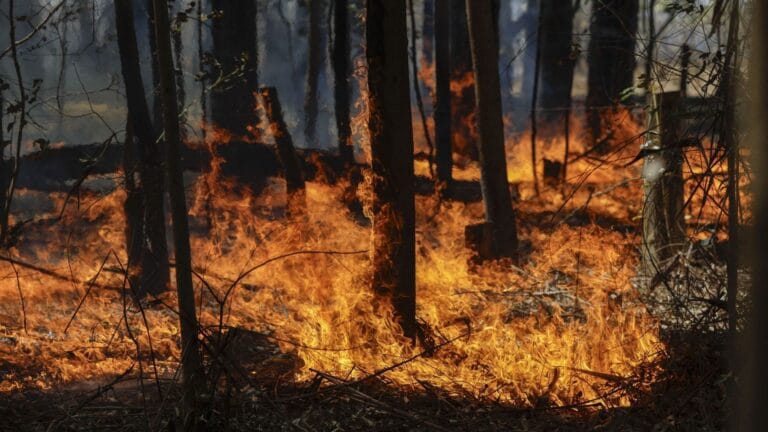Brazil experienced a dramatic increase in fires in 2024, with 30.8 million hectares ravaged by flames, according to data published Wednesday by the monitoring platform MapBiomas.
This area, which exceeds that of Italy, marks a record since 2019 and represents a 79% increase compared to the previous year, or an additional 13.6 million hectares.
Nearly 73% of the burned areas corresponded to native vegetation, largely forest formations.
This toll is particularly alarming, as the Amazonian city of Belém is set to host the United Nations Climate Conference COP30 in November.
Researchers attribute this surge in fires to a prolonged drought exacerbated by the El Niño phenomenon, characterized by an abnormal warming of Pacific waters between 2023 and 2024.
“The impacts of this devastation underscore the urgency for coordinated action and commitment at all levels to stem an environmental crisis amplified by extreme weather conditions, but triggered by human activity,” said Ane Alencar, coordinator of MapBiomas Fire.
The state of Pará was the most severely affected, with 7.3 million hectares burned, followed by Mato Grosso (6.8 million hectares) and Tocantins (2.7 million hectares).
In December alone, an area equivalent to a territory slightly smaller than Lebanon was destroyed, amounting to 1.1 million hectares, representing 3.6% of annual fires.
The Amazon paid the heaviest price, with 17.9 million hectares burned, accounting for 58% of the burned areas nationwide. Of this land, 6.8 million hectares were forests, surpassing the affected pastures (5.8 million hectares).
“This change in the pattern of fires is alarming, as burned forests become more vulnerable to future fires. It is important to remember that fire in the Amazon is not a natural phenomenon, but the result of human interventions,” emphasized Felipe Martenexen, a researcher at MapBiomas.
In December, the Amazon accounted for 88% of the burned areas in the country, of which 37.5% were forests.
The Cerrado was also severely impacted, with 9.7 million hectares destroyed, of which 85% was native vegetation, primarily savannas. Fires there increased by 91% compared to 2023, reaching their highest level since 2019.
“Historically, the Cerrado has evolved with natural fires caused by lightning during the transition between dry and rainy seasons. However, there is a notable increase in fires during the dry season, fueled by human activity and climate change,” explained Vera Arruda, a researcher at MapBiomas.
The Pantanal, for its part, saw 1.9 million hectares burned, followed by Mata Atlântica (1 million hectares), Caatinga (330,000 hectares), and Pampa (3,400 hectares).
According to Eduardo Vélez, also a researcher at MapBiomas, the Pampa recorded the lowest burned area in 2024 since the start of measurements in 2019.
“This result is explained by the marked effects of El Niño, which, in southern Brazil, caused significant rainfall, including the floods that occurred in May 2024,” he recalled.


